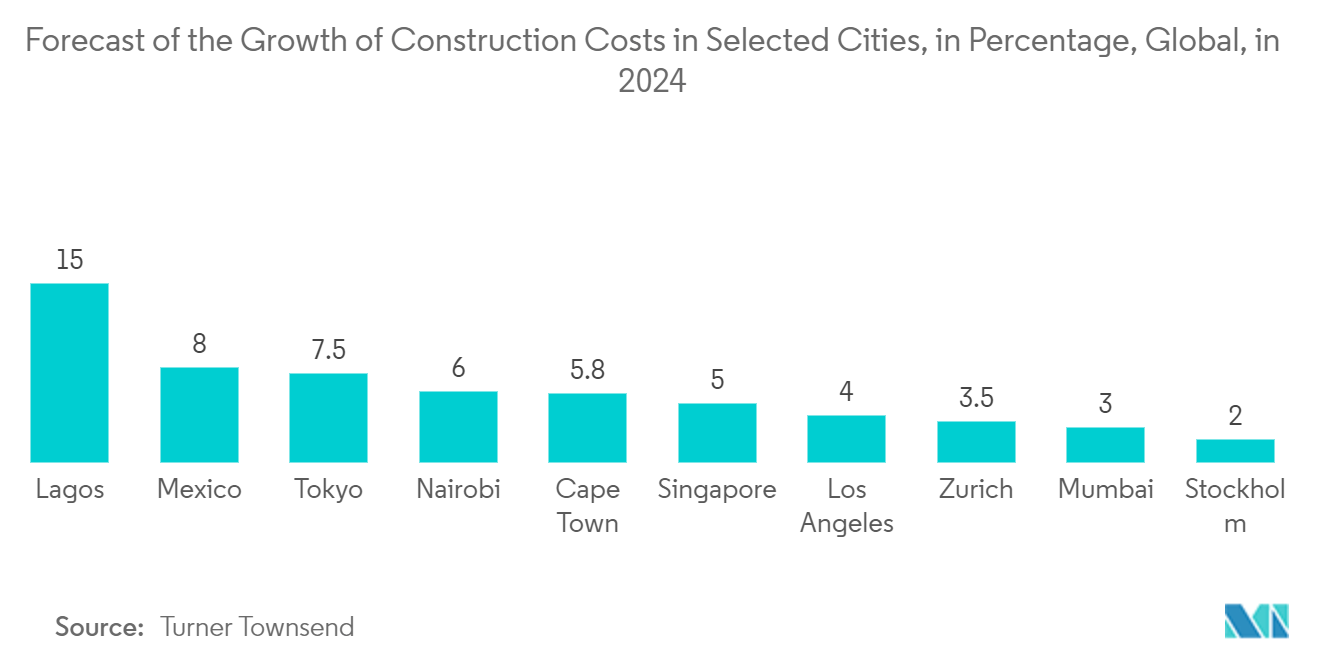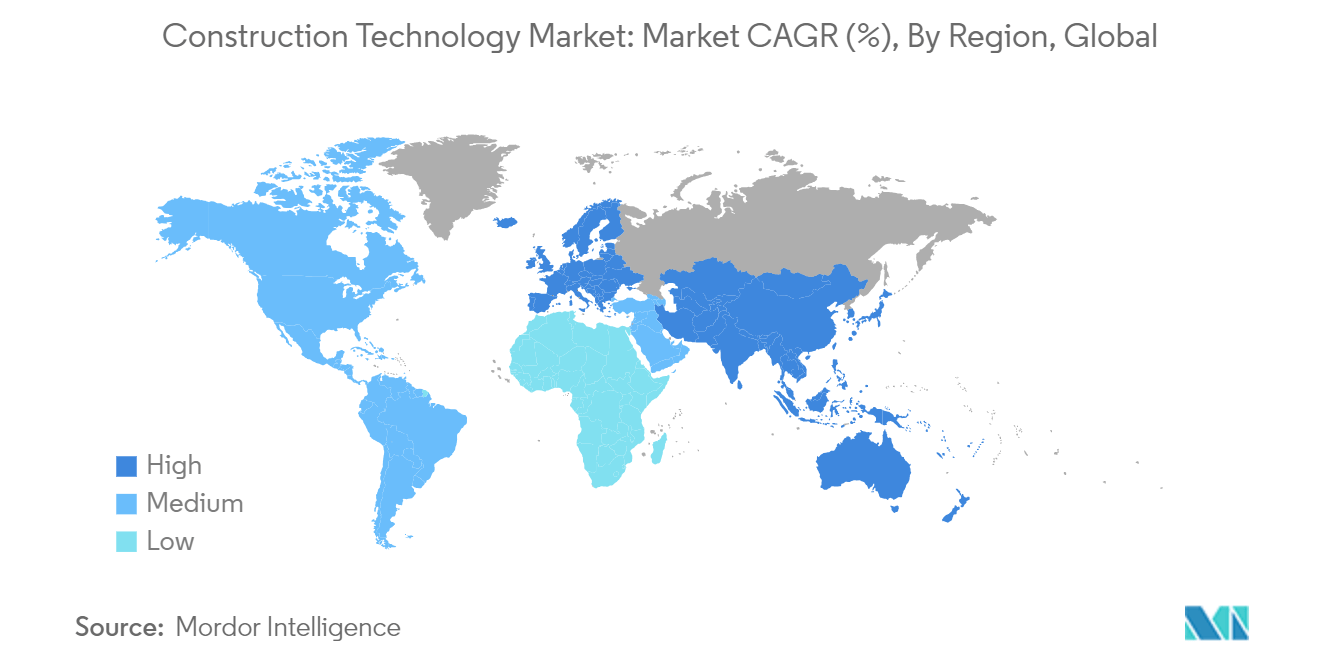Market Trends of Construction Technology Industry
Building Information Modeling (BIM) Software is Expected to Hold Significant Market Share
- Building Information Modeling (BIM) software plays a pivotal role in refining the planning and execution of construction projects. By enabling the creation of cohesive 3D models that centralize all project data, BIM software supersedes traditional 2D drawings. This holistic approach streamlines communication and enhances stakeholder collaboration, driving efficiency throughout the project's lifecycle.
- Globally, countries like the United Kingdom are accelerating BIM adoption through mandatory regulations. As of February 2023, public-funded projects in the UK must adhere to the UK BIM Framework. This requirement stems from the Information Management Mandate outlined in the TIP Roadmap to 2030 and aligns with the Government's expectations outlined in the Construction Playbook. These regulations apply universally, covering roads, rails, buildings, and more. Additionally, nations such as India, Hong Kong, France, South Korea, Germany, and Italy increasingly embrace BIM technology.
- Furthermore, BIM's utility extends beyond mere design, playing a crucial role in the field by ensuring data accuracy and minimizing rework. It boosts the visibility of project details among teams, leading to more accurate planning and execution. Experts forecast a growing emphasis on data-driven management in BIM, harnessing AI for enhanced decision-making and operational efficiency.
- Beyond project execution, BIM is invaluable in post-construction phases, assisting with maintenance schedules to ensure that structures remain up to code and upkeep costs are optimized. Additionally, BIM lays the groundwork for virtual reality applications in construction, facilitating virtual simulations that enhance planning and engage stakeholders.
- Turner & Townsend reported that in 2024, Lagos, Nigeria, was poised to rank among the global leaders in construction cost growth. In contrast, New York City, USA, was projected to see a 4 percent increase in construction costs. Rising construction expenses in major cities are pushing firms to adopt BIM software to cut costs, boost efficiency, and mitigate risks. Thus, the firms must be ready to allocate resources and navigate the hurdles of effective BIM implementation.
- BIM has evolved from a mere design tool to a comprehensive project management solution, revolutionizing the construction industry. As advancements continue and regulatory adoption widens, BIM's influence on enhancing project efficiency, safety, and cost management becomes increasingly pronounced, underscoring its pivotal role in contemporary construction practices.

Europe is Expected to Hold Significant Market Share
- As European cities witness swift population growth, the demand for housing, infrastructure, and urban renewal projects surges. The European Union's emphasis on infrastructure development—especially in transportation, energy, and digital connectivity fuels investments in construction technology, aiming to enhance project delivery and efficiency. As per Turner & Townsend, as of 2024, Geneva and Zurich, two prominent Swiss cities, boasted some of Europe's steepest construction costs, exceeding USD 5,000 per square meter. London ranked third at USD 4,473 per square meter.
- Europe leads the charge against climate change, implementing strict regulations on energy efficiency, resource use, and carbon emissions in the construction sector. According to the Institute of Building Technology, buildings register for one-third of the total waste generated in the EU. Several regulations and actions have been implemented to manage waste disposal and treatment effectively and sustainably in response to this issue. Adopting construction technology is pivotal in adhering to these regulations, offering sustainable materials, energy-efficient designs, and waste-minimization solutions.
- Technological advancements like Building Information Modeling (BIM) are becoming increasingly prominent in Europe, enhancing design, planning, and construction management. These advancements boost project efficiency, minimize waste, and foster better stakeholder collaboration. Furthermore, the emergence of digital twins—virtual replicas of physical assets—is transforming the construction landscape.
- They offer real-time insights into building performance, support predictive maintenance, and streamline operations. Additionally, integrating AI and ML into construction technology automates tasks, fine-tunes resource allocation, and elevates decision-making processes.
- Moreover, the parliament has approved a new Regulation to standardize the marketing conditions for construction products. This regulation will set unified rules for the market availability of construction products. It will also address public procurement measures, mandating the commission to specify minimum environmental sustainability standards for these products through delegated acts.
- In line with public procurement directives, if contracts stipulate minimum environmental sustainability criteria based on harmonized technical specifications, authorities must adhere to the standards outlined in the delegated acts. Numerous European nations are adopting public procurement policies promoting innovative construction technologies, propelling market growth.


